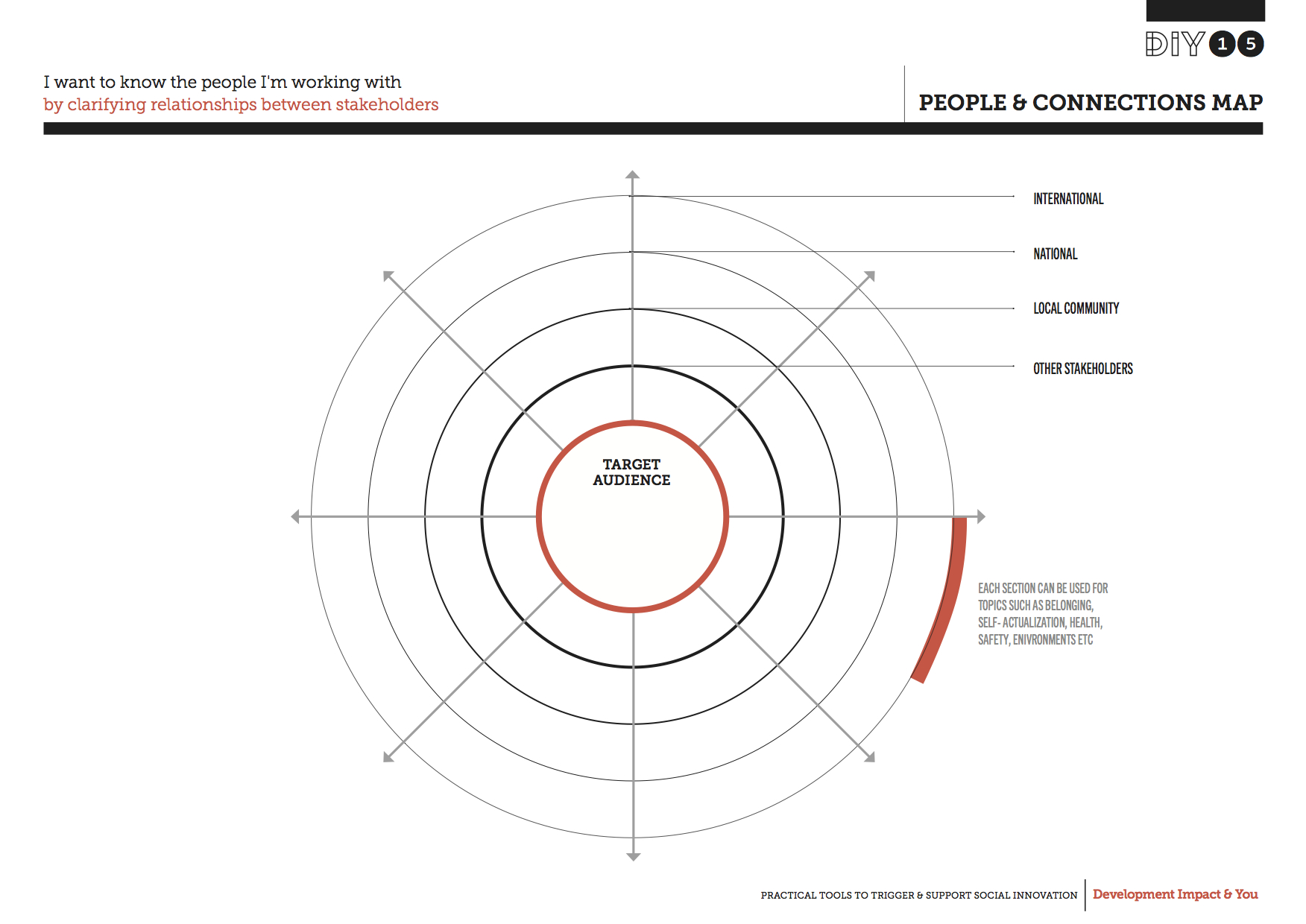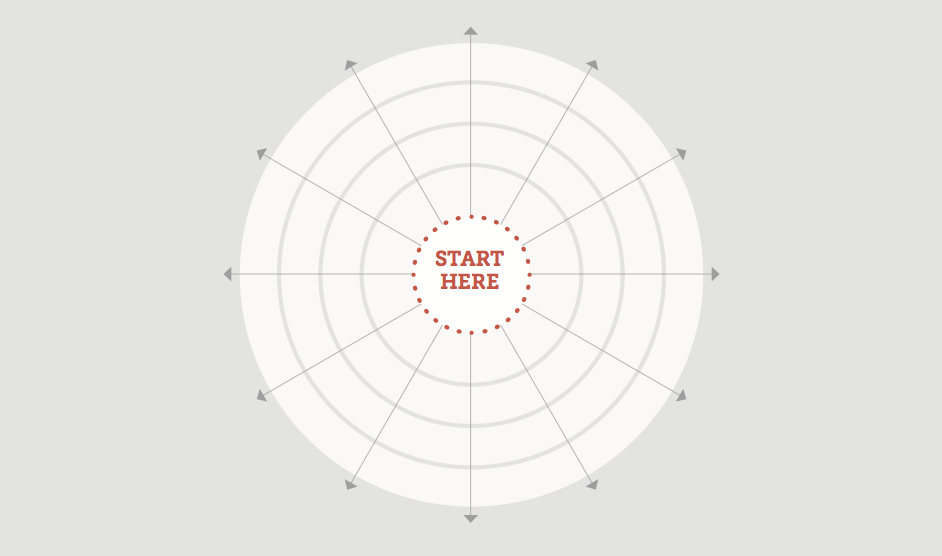The People & Connections Map is a quick and simple way to visualise exactly who you are trying to reach and how. It gives you an overview of all the different individuals and organisations involved in what you do. It allows you to develop a clearer picture of how all the different people and organisations relate both to your work and each other. These might include the people or communities you work directly with; the various bodies from which you receive (or are seeking) funding; or your own peers, local communities and even international support networks.
The People & Connections Map can be a great resource when sharing what you do and how it links together within the community of stakeholders that surround you. This tool is based on the original Stakeholder Spidergram developed by the Helsinki Design Lab, and further inspired by the Stakeholder Mapping tool by Namahn and Yellow Window.

